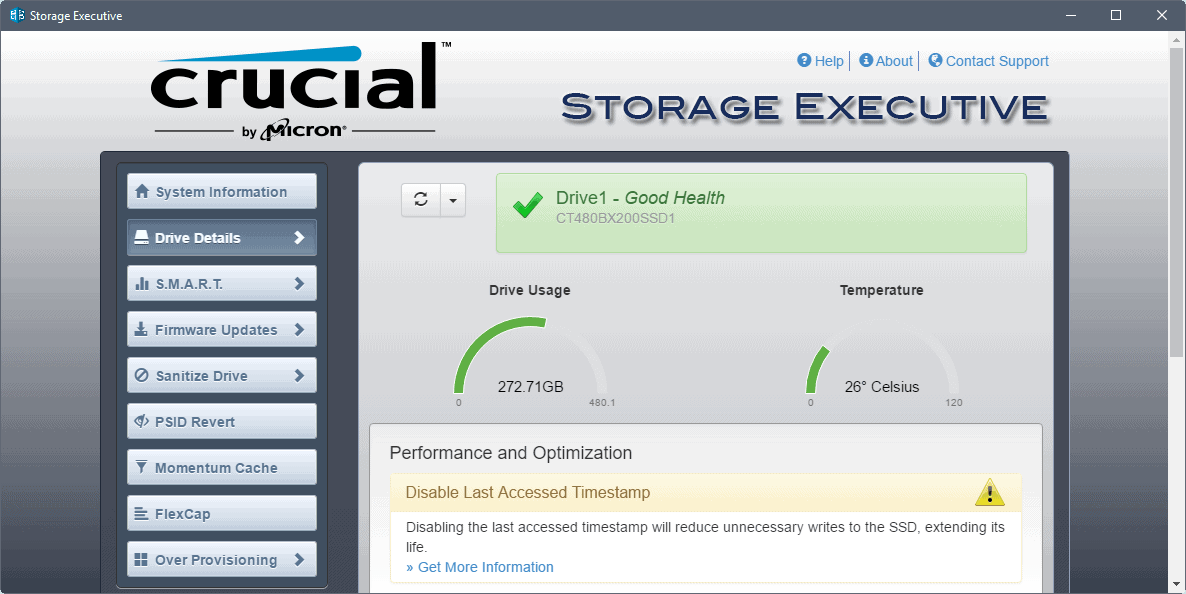
- #Crucial storage executive does not recognize ssd update#
- #Crucial storage executive does not recognize ssd portable#
- #Crucial storage executive does not recognize ssd software#
The Crucial Storage Executive Tool download can be found on the linked Crucial support website.
#Crucial storage executive does not recognize ssd update#
You could update the firmware of the SSD relatively easily with the Crucial Storage Executive Tool, but you should, as always, back up important data before updating the firmware. Crucial provides this firmware version M6CR030 for the X6 as the latest SSD firmware. The X6 SSD was shipped with the M6CR030 firmware.
#Crucial storage executive does not recognize ssd portable#
Immediately after connecting it to the PC, the Crucial USB SSD is listed in the Windows 11 Device Manager under Drives like an ordinary USB stick or SSD.īy the way, there is a link to the Crucial X6 support website on the drive.Īfter the assembly of the Crucial X6 2TB Portable SSD and the quick installation, we now come to the firmware update. In this respect, we would rather recommend investing in a corresponding USB-A to USB-C cable. In the worst case, you could deform the USB port due to the large leverage. However, we do not find this solution ideal at all, since it makes the plug unnecessarily long. If you use a motherboard that does not have a USB-C port, you can either order a USB-A to USB-C cable or, as mentioned at the beginning, order a Crucial USB-C to USB-A adapter and connect it to the included USB-C cable. Bottom line, you do not turn on/turn off the hardware encryption engine of the drive via the low level tool that you use to recover the drive using a PSID.We tested the Crucial X6 NVMe SSD with a wide variety of systems without any problems, most recently here on a ASRock Steel Legend motherboard USB-C port.
#Crucial storage executive does not recognize ssd software#
I believe it is up to the encryption software to hook into this capability. This is a nice feature that speeds up encrypting/decrypting, offloading the work onto the drive itself versus the CPU of your device. On the other hand, your drive may have a built-in hardware encryption engine on it. You will have lost all of your data, but you don't have to throw the drive away. It is a unique value for that drive, and it allows you to factory reset the drive. Nothing you do will help you to get onto that drive. Ok, now you find you have forgotten your password. When you boot up you are prompted for a password, you enter it, your drive boots up. Picture that you have an application that encrypts your drive. We are using these drives at work, and I think perhaps you have a misunderstanding. How can I know if the encrypt mecanism is active or not ?Īnd how can I activate it or be sure to permanently deactivate it ?īefore writing tons of datas on that disk. The encryptions seems to be activated by default, with nothing to do to deal with it. I found nothing on the Crucial site (nor anywhere else) that helps me. Nothing helps me to have the encrypt mecanism active. I have tried to create a partition, mount it, format it. The disk is not connected to a RAID controller. The disk does not contain any mounted partitions.

For the second drive (the system one, a standard HDD disk), I can read that that the command is not supported (not same words for the 2 disks).Īnd "The PSID recovery operation will be available when the disk meets all of the following conditions: Using the crucial Storage Executive software, I can see on the PSID Revert menu that the PSID revert cannot be triggered for the SSD drive and can read that the encryption is not supported on it. I have bought a 2 TB crucial MX500 SSD drive, and just installed it on a Windows 7 圆4 machine, motherboard Gigabyte EP45-DS5 as a data drive.


 0 kommentar(er)
0 kommentar(er)
